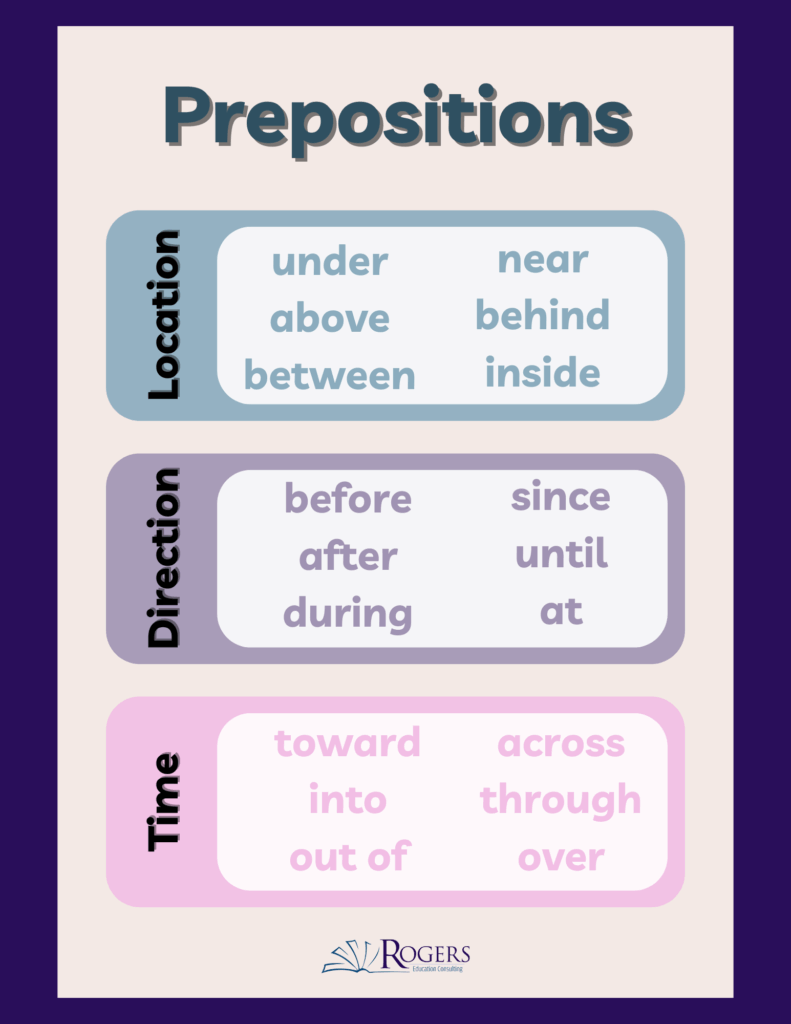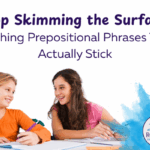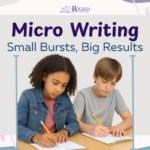📌 “Getting students to add details is like pulling teeth!”
Sound familiar? You’re not alone. Many teachers find themselves begging students to add more, but what they get is a random adjective here, an unnecessary adverb there, and not much else.
Here’s the thing: if we want students to write with detail and clarity, we need to give them the tools and the time to practice those tools. One of the simplest, most overlooked tools? Prepositional phrases.

✍️ Why It’s Important: From Word Jumbles to Writer’s Voice
Prepositional phrases do a lot of heavy lifting in student writing. They help clarify, expand, and refine ideas when used with intention.
Instead of vague or choppy sentences, students can learn to:
- Locate an event in time or space (e.g., “In the distance…”)
- Add texture and clarity (e.g., “under the glowing streetlight”)
- Connect ideas in a more mature, fluid way
But here’s the catch: memorizing the word “preposition” or reciting a list of them won’t make students better writers. Understanding the function of these phrases in real writing will.
📚 Modeling & Mentor Texts: Show It, Don’t Just Name It
When introducing any part of speech, start with the writing … always.
Find a mentor sentence in a text you’re already using. Something like:
“The moonlight shimmered through the trees, casting shadows across the forest floor.”
Talk through it with students:
- Where is the moonlight?
- What does it do?
- What’s the effect of those last few words?
Then, turn that mentor sentence into a fill-in-the-blank scaffold (MadLib-inspired):
The [light/sound/movement] shimmered [where?], [what effect did it have and where?]
Let students try it in low-stakes practice first—make it silly, make it visual, make it playful. You’re not grading for grammar mastery here—you’re building muscle.
🛠️ Interactive Activities: Let Them Play
Here’s how to help students explore prepositional phrases before they use them in their writing:

Word Bank Build – Co-create a classroom word bank of common prepositions (under, across, near, during, through, without). Sort them by type, location, time, and direction.
Phrase Finders – Highlight prepositional phrases in mentor texts or student samples. What do they add? What happens if you remove them?
Quick Sketch – Read a sentence with a strong prepositional phrase and have students sketch it. Then remove the phrase and sketch again. What changed?
These warm-ups don’t take more than 5 minutes, but they deepen understanding quickly.
🚀 Scaffolding & Support: Break It Down
For your students who struggle to write complete sentences (let alone detailed ones), chunk it:
- Start with just identifying the object of the preposition (“the book” in on the book)
- Then build phrases orally—have students move around the classroom and narrate their position: “I’m beside the desk.” “I’m under the table.”
- Move to sentence expansion. Use sentence starters like:
- The sound came from…
- She walked through…
- The room lit up with…
They’re building understanding step-by-step, with repetition and context.
🎓 Try It Tomorrow: A Quick Win for the Classroom
Write this on your board or slide as a bell-ringer:
Add a prepositional phrase to this sentence:
The dog barked.
Model one together:
➡ The dog barked at the squirrels in the tree.
➡ The dog barked through the hole in the fence.
Then challenge students to try two versions—and compare how the meaning shifts.
Bonus: Keep a running anchor chart of student-generated prepositional phrases to inspire their writing throughout the unit.
💬 Final Thoughts
Prepositional phrases aren’t just grammar checkboxes—they’re tools for building detail, voice, and clarity. If we move beyond memorization and into meaning, we give students something they can use in their writing.
Want help designing mentor sentence mini-lessons, interactive grammar warm-ups, or building out your writing instruction playbook?
📩 Reach out here for teacher PD that moves the needle.


